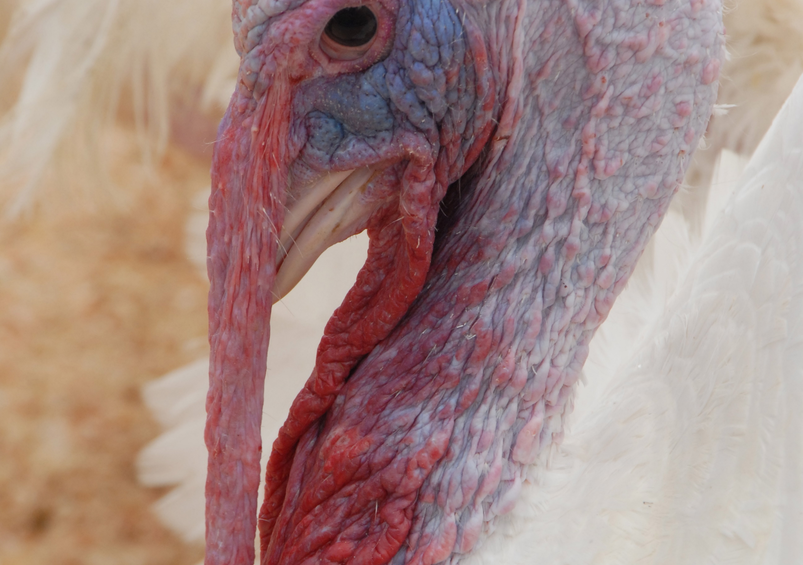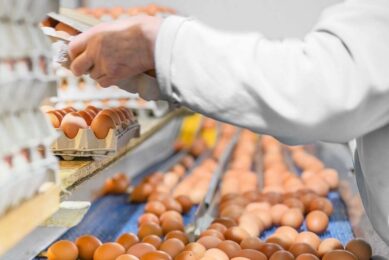France returns as major EU turkey producer

France held the lead in EU turkey production for quite some years, but other countries also geared up and France lost its top position. Recovery is on its way. A battle plan for strengthening the poultry industry has been launched and that includes the ?turkey business.
By Victor Forthorn, France
In France, a growth of 2.4% in 2012 marked an end to a 12 year decline in turkey production. Production reached 414,000 metric tonnes in carcass weight equivalent (tcwe) last year, coming from 405,000 tcwe in 2011. Yet it is still far from its highest level of 763,000 tcwe in 2000. This historic peak occurred when Italy was struck by avian influenza. The demand then was an addition to the very good national consumption and exports. It was a long time ago that the price of turkey meat was lower than the broiler price. The 2012 growth brought France back to its leading position in turkey production which it lost to Germany in 2010. Germany’s production remained flat around 400,000 tcwe last year, having risen from 292,000 in 2000.
The other big European turkey producers remained Italy (+4.5% to 288,000 tcwe in 2012), Poland (flat from 2007 to now around 275,000 tcwe) and UK (177,000 tcwe in 2012). The latter had once been in third position with nearly 300,000 tcwe at the end of the 90’s but growth in Germany and Poland dragged the UK backwards.
EU production is now slightly higher than 1.9 million tcwe with a +2.15%. In terms of competition, Brazil produced 442,000 tonnes, with a +26,8% growth of exports last year (reaching 170,000 tonnes). Although EU production showed a growth in 2012 thanks to France, Italy and the UK, European Commission experts are not very optimistic for 2013. They expect a 0.6% drop for the running year.
Heavier birds
The recovery of French production is mainly due to individual weight growth of turkeys, now reaching 11.3 kg/head, a 9% growth which is mainly due to late slaughtering. This provides more meat fit for industrial use. The total number of turkeys fell by 5% in 2012 compared with 2011. And the trend remains the same for 2013 with the same range of weight and the number of birds housed (-8.9% in January 2013 compared with January 2012).
Consumption in France also rose in 2012 to 309,500 tonnes and imports remained at the same level with 42,400 tonnes. Exports however, declined by 104,500 tonnes, only half of the 2005 level and less than a third of the exports in 2000.
But, Gilles Le Pottier, director of Cidef (Comité interprofessionnel de la dinde française) says, the fact that French consumption went up again is good news: “We know through retail data that family consumption is better, more of course for processed than for fresh meat as trends are the same everywhere.” And consumption in restaurants, as well as in schools and hospitals is also higher. Turkey meat is meeting consumers’ needs as everyone can eat it, with high protein content, no known allergies and the support of new French nutritional standards (size of protein portions) for school canteens. Consumption in France peaked in 2000 (6.83 kg/head) and producers see this as their aim. After all, it has been proven to be within reach. Yet they are well aware that it may be out of reach in the short term.
Segmented pool
The history of poultry meat consumption in France is an old and diverse one. Turkey is part of a very segmented pool with broiler being on top and still growing (15.6 kg/head per year), then turkey (5.28 kg), duck (3.1 kg), guinea fowl (0.5 kg). Quail and squab (domestic pigeon) complete this wide range of avian meat. Of course, trends reflect the economic crisis which emphasises the gap between day to day decisions, based on price and incidental occasions like national holidays.
Consumers make their choice relative to the price between broiler or turkey fillets on the supermarket shelf. Turkey is vulnerable to the “ratchet effect”. Once a certain stage in higher production cost has been passed, concerns about imbalance are justified. The distributor margins reflect the higher production cost for turkey and contribute to the gap: 42% for turkey filet versus 30% for broiler filet as entry-level product.
Less turkey farms
Regarding French production, the price of raw materials, for instance for every kind of animal production has quite an impact on production cost. The Itavi index for turkey (which shows the evolution of feed price) had been fixed at 100 in 2006 and reached an average of 187.6 last year after an average of 169.55 in 2011 and 143.74 in 2010. Alain Berger, interdepartmental delegate for the food industry explained in his battle plan for poultry production, that volatility must also be dealt with at an governmental level, for example by promoting proximity between French cereal producers and poultry production.
The number of turkey farms decreased quite heavily (30% less between 2004 and 2008), but farmers are more specialised. This is a general trend for all poultry producers in France. The main region remains Western France with an on-going concentration around slaughtering houses. Around 2,000 farmers are now assuring the national production.
The main industrial producers are LDC (private), Doux (whose Pleucadeuc plant is for sale), Gastronome (coop), Glon-Sanders (now part of coop group Sofiproteol), Duc, Ronsard (group coop Triskalia). Even group plants TDI and Le Clezio (Saint Caradec) are also on the market.
Source: World Poultry magazine Vol 29 nr 9, 2013
Battle plan to boost the industry
The poultry industry in France collectively analysed its strengths and weaknesses. Known for its labelled production, it doesn’t want to stay only in this pattern. Alain Berger, interdepartmental delegate for the food industry, presented a battle plan for reactivating the industry. The aim is to create competitive conditions, based on three focus areas:
1 – Regain internal French poultry market (mainly broiler)
2 – Change from a segmented market from labelled to standard certificated poultry
3 – Maintain overseas exports, even if European restitutions decrease.
The first step is to promote bigger farms to 5,000 m2 (average is now 1,600 m2 ) but also to spur technological innovation regarding energy saving and recovery of litter for energy production. Slaughterhouse capacity is also subject to discussion.
Some plants will probably be closed in Brittany due to idle capacity. Costs must be looked at
as older plants are increasingly expensive to operate. Another main point is the fight against
distortion in competition inside the European Union like labour cost, regulation application (for example, French controllers still don’t distinguish 3 mm-meat from mechanically separated meat), and fiscal distortion like added value tax on finished products or eco-taxes on transport. The turkey sector has its own plan named “Neo-dinde” (new turkey) which has been launched. The first step has been to visit other European countries.
Join 31,000+ subscribers
Subscribe to our newsletter to stay updated about all the need-to-know content in the poultry sector, three times a week. Beheer
Beheer








 WP Admin
WP Admin  Bewerk bericht
Bewerk bericht